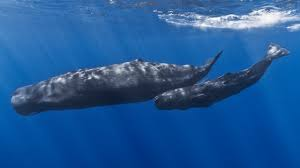Free Courses Sale ends Soon, Get It Now


Free Courses Sale ends Soon, Get It Now



Disclaimer: Copyright infringement is not intended.
Context:
Details:
Significance:
How Whales communicate:
About Sperm whales
Source:
|
PRACTICE QUESTION Q. Consider the following statements about sperm whales:
How many of the above statements are correct? A) Only one B) Only two C) Only three D) All four Answer: B |
© 2024 iasgyan. All right reserved